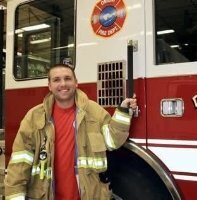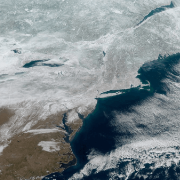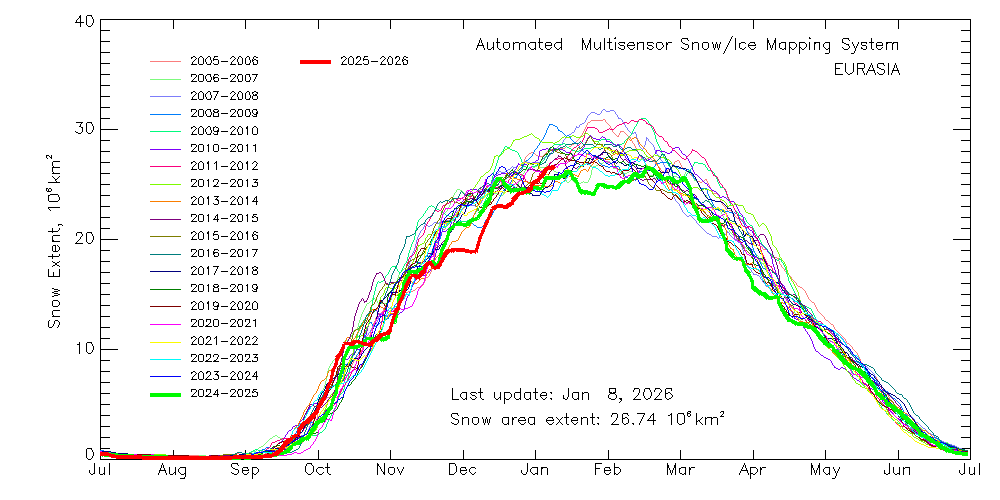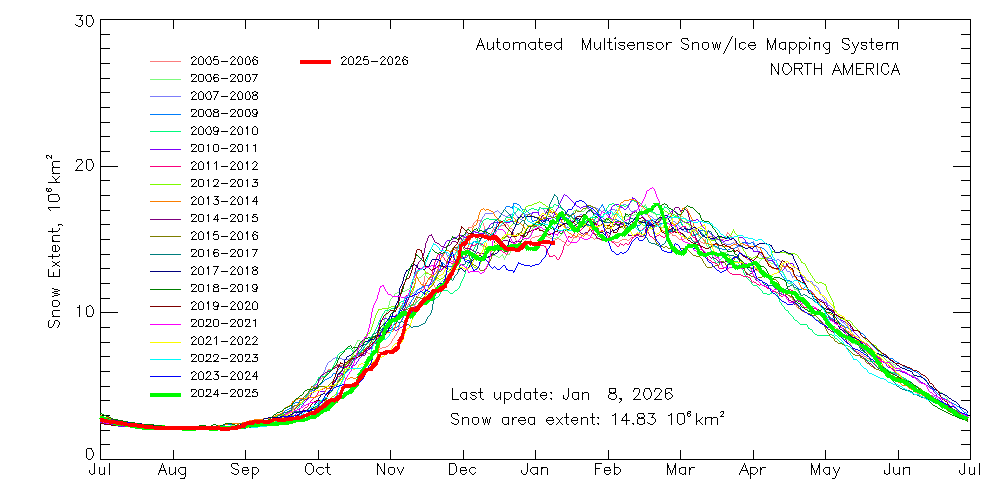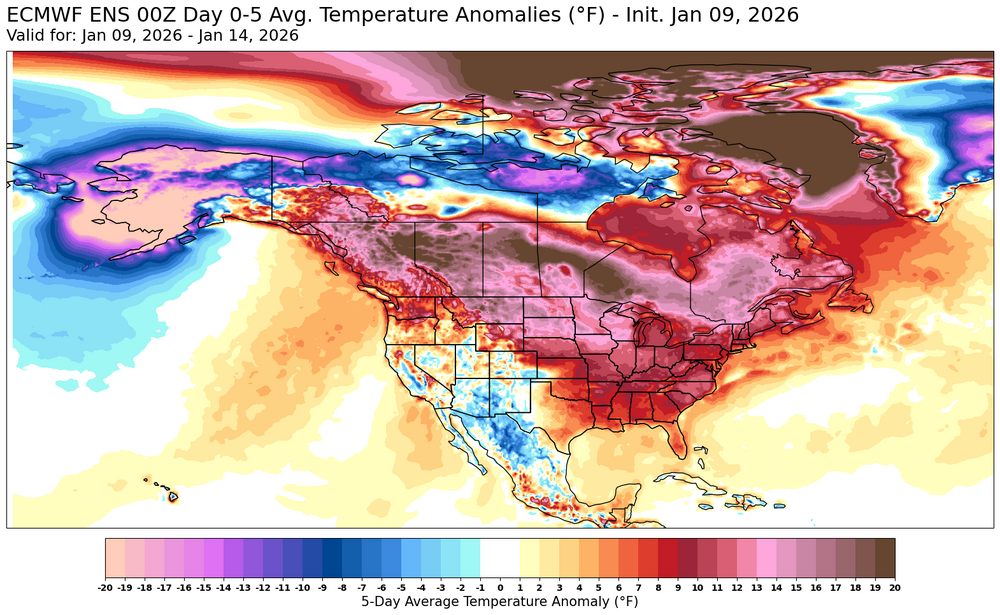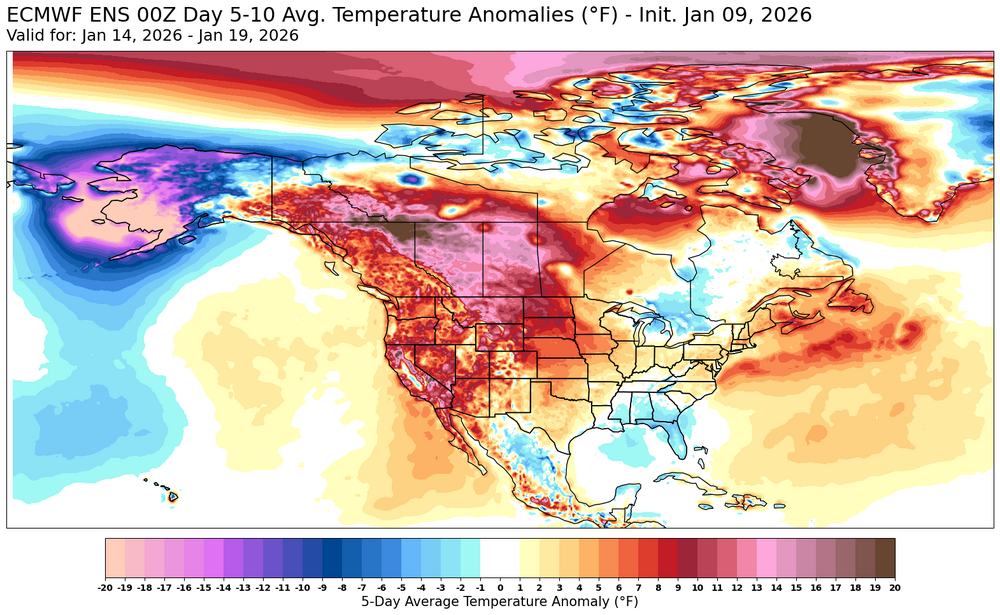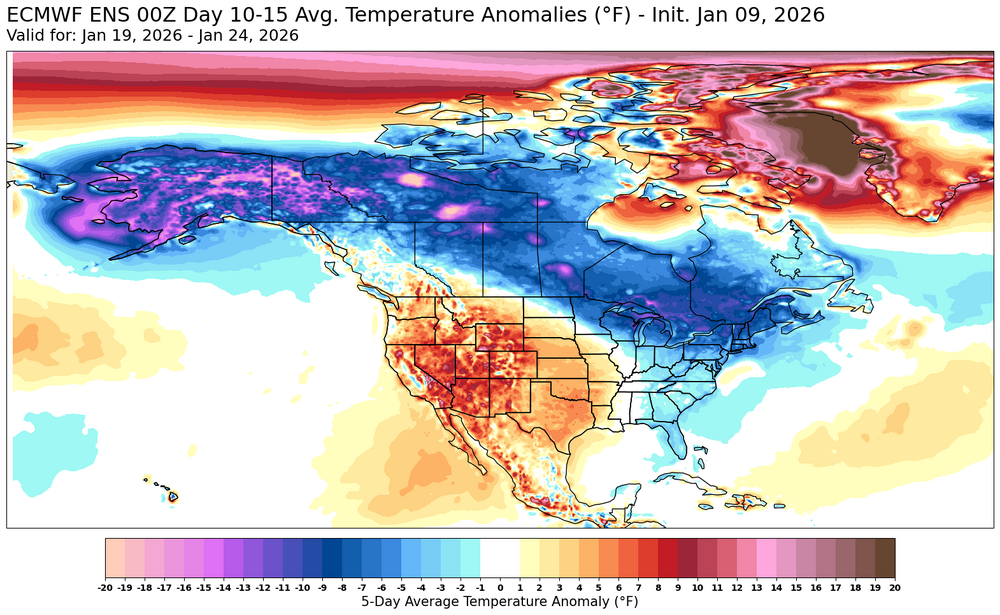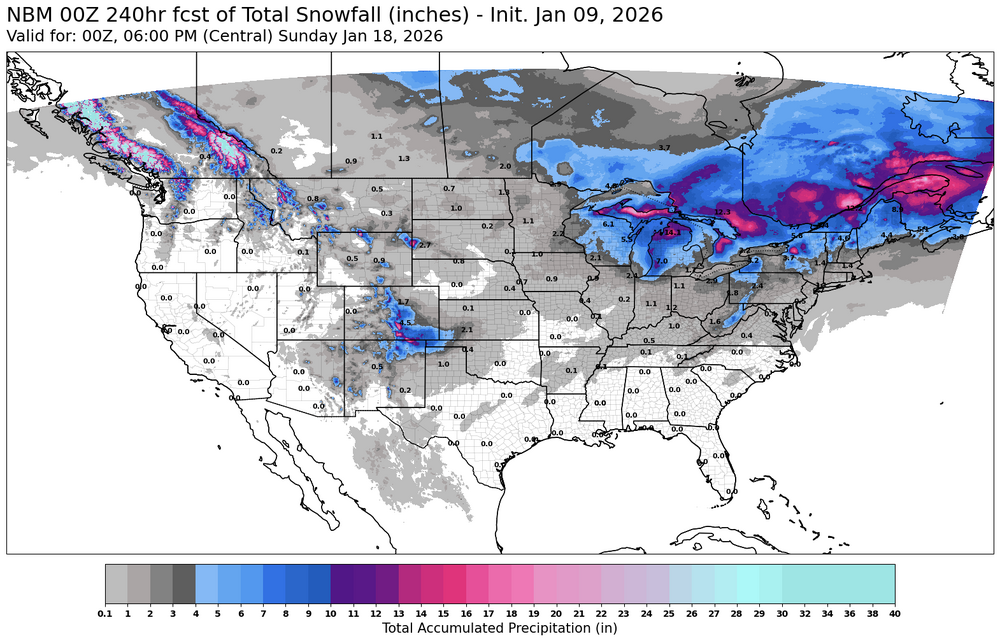-
Posts
36,127 -
Joined
-
Last visited
About bluewave

Profile Information
-
Gender
Male
-
Location:
KHVN
Recent Profile Visitors
58,636 profile views
-
This is why you have to use the ensemble means which never really showed a big snowstorm threat here. What happens in the age of social media is that someone takes a random outlier model run and uses it to justify that there is going to be a big disruptive snowstorm. I like a big snowstorm as much as anyone. So it’s very disappointing to turn on YouTube and see multiple videos with over the top big snowstorm titles when the ensemble means have much less dramatic solutions. Part of this is conditioning from the 2010 to 2018 era when it seems like every time we had a ridge out West and a trough in the East there was a major East Coast KU snowstorm. But that era was defined by a weaker Northern Stream of the Pacific Jet that allowed the Southern Stream to take the lead. So jet stream dynamics have changed since 2018-2019 making it harder to get big snowstorms over 12” for at least some portion of the area.
-
Very difficult to pull off a phase like that with such a dominant Northern Stream pattern and lack of cold high pressure in place.
-
That is probably due to the old weather instruments being in a warmer area with less cold air drainage than where the current FOK ASOS is located.
-
Our area generally doesn’t get big East Coast snowstorms when there is a strong kicker coming through the Great Lakes and a weak cold high pressure in between.
-
The 1960s had the best Long Island and surrounding area radiational cooling following the big snowstorms of that era. for January 21, 1961 through January 31, 1961 Click column heading to sort ascending, click again to sort descending. NY SHRUB OAK COOP -25 NY CARMEL COOP -24 NJ CANOE BROOK COOP -21 CT WESTBROOK COOP -21 NY PORT JERVIS COOP -20 CT WATERBURY RADIO WBRY COOP -19 NJ CHARLOTTEBURG RESERVOIR COOP -18 CT STAMFORD 5 N COOP -18 CT MOUNT CARMEL COOP -17 NY SUFFERN COOP -16 CT DANBURY COOP -16 NY BEDFORD HILLS COOP -16 NY STEWART FIELD WBAN -15 NJ WANAQUE RAYMOND DAM COOP -14 CT GROTON COOP -14 CT NORWICH PUBLIC UTILITY PLANT COOP -13 NY PATCHOGUE 2 N COOP -12 CT COLCHESTER 2 W COOP -12 NJ LITTLE FALLS COOP -11 NY MIDDLETOWN 2 NW COOP -10 NY SCARSDALE COOP -10 NY WESTCHESTER CO AP WBAN -10 NJ ELIZABETH COOP -10 CT MIDDLETOWN 4 W COOP -10 NY WEST POINT COOP -7 CT NORWALK GAS PLANT COOP -7 NJ PLAINFIELD COOP -7 CT NEW HAVEN TWEED AP WBAN -7 NY HEMPSTEAD GARDEN CITY COOP -2 NY SETAUKET STRONG COOP -2 NY RIVERHEAD RESEARCH FARM COOP -2 NY BRIDGEHAMPTON COOP -2 CT IGOR I SIKORSKY MEMORIAL AIRPORT WBAN -1 NJ PATERSON COOP -1 NY WESTHAMPTON GABRESKI AP WBAN -1 Monthly Snowfall Data for January 1961 for Upton NY NWS CWA Click column heading to sort ascending, click again to sort descending. NY WARWICK COOP 45.2 NY GARDNERVILLE COOP 44.0 NJ GREENWOOD LAKE COOP 37.6 NY PORT JERVIS COOP 37.2 NY WEST POINT COOP 35.9 CT WOLCOTT RESERVOIR COOP 33.5 NY DOBBS FERRY-ARDSLEY COOP 32.7 NJ PATERSON COOP 32.5 NJ MAHWAH COOP 32.0 NY WESTCHESTER CO AP WBAN 31.1 NJ MIDLAND PARK COOP 31.0 NJ CHARLOTTEBURG RESERVOIR COOP 31.0 NY SCARSDALE COOP 30.9 NY CARMEL COOP 30.0 NJ CANOE BROOK COOP 29.0 NY STEWART FIELD WBAN 28.0 NY BEDFORD HILLS COOP 27.7 NJ RINGWOOD COOP 27.5 NY SHRUB OAK COOP 27.5 NY BRIDGEHAMPTON COOP 27.4 CT STAMFORD 5 N COOP 27.0 CT MIDDLETOWN 4 W COOP 26.2 CT COCKAPONSET RANGER STA COOP 25.0 NJ WANAQUE RAYMOND DAM COOP 24.0 NJ LITTLE FALLS COOP 22.8 CT WATERBURY RADIO WBRY COOP 22.5 NJ NEWARK LIBERTY INTL AP WBAN 22.2 NY PATCHOGUE 2 N COOP 21.6 NY NY WESTERLEIGH STAT IS COOP 21.5 NY WESTHAMPTON GABRESKI AP WBAN 21.5 NJ CEDAR GROVE COOP 21.0 NY SUFFERN COOP 20.6 NJ PLAINFIELD COOP 20.5 NJ IRVINGTON COOP 20.5 NY HEMPSTEAD GARDEN CITY COOP 20.5 CT COLCHESTER 2 W COOP 20.2 NY NEW YORK LAUREL HILL COOP 20.0 NY MINEOLA COOP 20.0 CT DANBURY COOP 20.0 CT NEW HAVEN TWEED AP WBAN 20.0 CT GROTON COOP 20.0 Data for February 7, 1967 through February 14, 1967 Click column heading to sort ascending, click again to sort descending. NY STEWART FIELD WBAN -20 NY SHRUB OAK COOP -16 NY MIDDLETOWN 2 NW COOP -16 CT COLCHESTER 2 W COOP -15 CT WESTBROOK COOP -15 NY ISLIP-LI MACARTHUR AP WBAN -14 NY CARMEL COOP -12 CT MOUNT CARMEL COOP -12 CT STAMFORD 5 N COOP -11 CT DANBURY COOP -10 CT MIDDLETOWN 4 W COOP -10 NJ CHARLOTTEBURG RESERVOIR COOP -10 NY PORT JERVIS COOP -10 CT GROTON COOP -9 CT NORWICH PUBLIC UTILITY PLANT COOP -9 NJ CANOE BROOK COOP -9 NY SUFFERN COOP -8 CT NORWALK GAS PLANT COOP -7 NY SCARSDALE COOP -6 NY WESTCHESTER CO AP WBAN -6 NY YORKTOWN HEIGHTS 1W COOP -5 NY WESTHAMPTON GABRESKI AP WBAN -5 NY BEDFORD HILLS COOP -4 NJ WANAQUE RAYMOND DAM COOP -4 NY WEST POINT COOP -4 NY PATCHOGUE 2 N COOP -4 CT NEW HAVEN TWEED AP WBAN -3 CT IGOR I SIKORSKY MEMORIAL AIRPORT WBAN -2 NJ PLAINFIELD COOP -2 NJ LITTLE FALLS COOP -2 NY HEMPSTEAD GARDEN CITY COOP -1 Monthly Snowfall Data for February 1967 for Upton NY NWS CWA Click column heading to sort ascending, click again to sort descending. CT WOLCOTT RESERVOIR COOP 34.2 CT COLCHESTER 2 W COOP 33.2 CT EASTON RESERVOIR COOP 32.5 CT COCKAPONSET RANGER STA COOP 32.3 NY STEWART FIELD WBAN 32.1 NY WARWICK COOP 32.1 CT DANBURY COOP 31.6 NY BRIDGEHAMPTON COOP 30.5 NY SCARSDALE COOP 30.5 NY WESTCHESTER CO AP WBAN 29.6 NY NY WESTERLEIGH STAT IS COOP 29.5 CT TRAP FALLS RESERVOIR COOP 29.5 NJ PLAINFIELD COOP 29.1 NJ CHARLOTTEBURG RESERVOIR COOP 28.6 NY BEDFORD HILLS COOP 28.5 NY DOBBS FERRY-ARDSLEY COOP 28.1 NY MINEOLA COOP 28.0 NY PATCHOGUE 2 N COOP 27.8 NY NEW YORK LAUREL HILL COOP 27.7 CT WESTBROOK COOP 27.6 NJ MIDLAND PARK COOP 27.5 NY WESTHAMPTON GABRESKI AP WBAN 27.3 NJ CANOE BROOK COOP 27.0 NY CARMEL COOP 27.0 NJ PATERSON COOP 26.8 NJ WANAQUE RAYMOND DAM COOP 26.6 NY WEST POINT COOP 26.3 NY YORKTOWN HEIGHTS 1W COOP 26.0 NY SHRUB OAK COOP 25.5 NJ NEWARK LIBERTY INTL AP WBAN 25.4 CT NEW HAVEN TWEED AP WBAN 25.3 CT MIDDLETOWN 4 W COOP 25.3 CT STAMFORD 5 N COOP 25.3 NY GARDNERVILLE COOP 25.0 CT MOUNT CARMEL COOP 24.6 NY RIVERHEAD RESEARCH FARM COOP 24.3 CT NORWALK GAS PLANT COOP 24.3 NY NEW YORK AVE V BROOKLYN COOP 24.0 CT IGOR I SIKORSKY MEMORIAL AIRPORT WBAN 24.0 NY HEMPSTEAD GARDEN CITY COOP 23.8 NY PORT JERVIS COOP 23.7 NY NY CITY CENTRAL PARK WBAN 23.6 NJ GREENWOOD LAKE COOP 20.5 NY LAGUARDIA AIRPORT WBAN 20.0
-
Same to you.
-
At least Eurasia is trying to bounce off their record low snowcover extent as North America approaches record lows for mid-January with this current warm up.
-
-
Yeah, the average temperatures at the major reporting stations from EWR to ISP so far this winter are in the 33° to 34° range. We finished December at -4.6° for the 7 station average. Sometimes based on the earlier climate periods we can get similar temperatures at the stations but there can be more departure variability. This is why I focus more on rankings and actual temperatures since departures are based on a rising mean each new 10 year update. Time Series Summary for NEWARK LIBERTY INTL AP, NJ Click column heading to sort ascending, click again to sort descending. 2026-01-08 33.4 0 2025-01-08 36.9 0 2024-01-08 43.0 0 2023-01-08 40.4 0 2022-01-08 42.5 0 2021-01-08 37.9 0 2020-01-08 38.1 0 2019-01-08 39.4 0 2018-01-08 31.0 0 Time Series Summary for NY CITY CENTRAL PARK, NY Click column heading to sort ascending, click again to sort descending. 2026-01-08 33.9 0 2025-01-08 37.0 0 2024-01-08 43.0 0 2023-01-08 40.4 0 2022-01-08 42.2 0 2021-01-08 38.8 0 2020-01-08 38.7 0 2019-01-08 40.1 0 2018-01-08 31.4 0 Time Series Summary for LAGUARDIA AIRPORT, NY Click column heading to sort ascending, click again to sort descending. 2026-01-08 34.3 0 2025-01-08 37.9 0 2024-01-08 42.9 0 2023-01-08 40.4 0 2022-01-08 43.5 0 2021-01-08 40.6 0 2020-01-08 39.2 0 2019-01-08 40.6 0 2018-01-08 32.5 0 Time Series Summary for JFK INTERNATIONAL AIRPORT, NY Click column heading to sort ascending, click again to sort descending. 2026-01-08 33.4 0 2025-01-08 38.2 0 2024-01-08 41.4 0 2023-01-08 39.2 0 2022-01-08 41.8 0 2021-01-08 38.3 0 2020-01-08 38.6 0 2019-01-08 39.9 0 2018-01-08 31.3 0
-
Colder start to winter than recent years but not as cold as 17-18 was through January 8th. Time Series Summary for ISLIP-LI MACARTHUR AP, NY December 1st through January 8th Click column heading to sort ascending, click again to sort descending. 2026-01-08 34.1 0 2025-01-08 35.8 0 2024-01-08 40.7 0 2023-01-08 38.6 0 2022-01-08 40.3 0 2021-01-08 36.9 0 2020-01-08 37.3 0 2019-01-08 38.2 0 2018-01-08 30.3 0
-
Significant increase in high tide or sunny day flooding across the areas in Florida which have experienced the greatest sea level rise. https://southeastfloridaclimatecompact.org/initiative/climate-indicators-high-tide-flooding/
-
-
The shrinking Northern Hemisphere cold pool is leading to these Arctic outbreaks covering a smaller geographic region than they used to.
-
Brian McNoldy @bmcnoldy.bsky.social Follow The average water level measured at Virginia Key (near #Miami) set a new monthly record high in October, which is also the new *all-time* record high month. I also feel confident that it was the highest monthly water level there since the last interglacial period... ~120,000 years ago. ALT ALT 8:12 AM · Nov 2, 2025 Everybody can
-
You would want to see the Northern Stream across the Great Lakes with all those lows racing east back off in order to give the Southern Stream an opportunity to lead.




